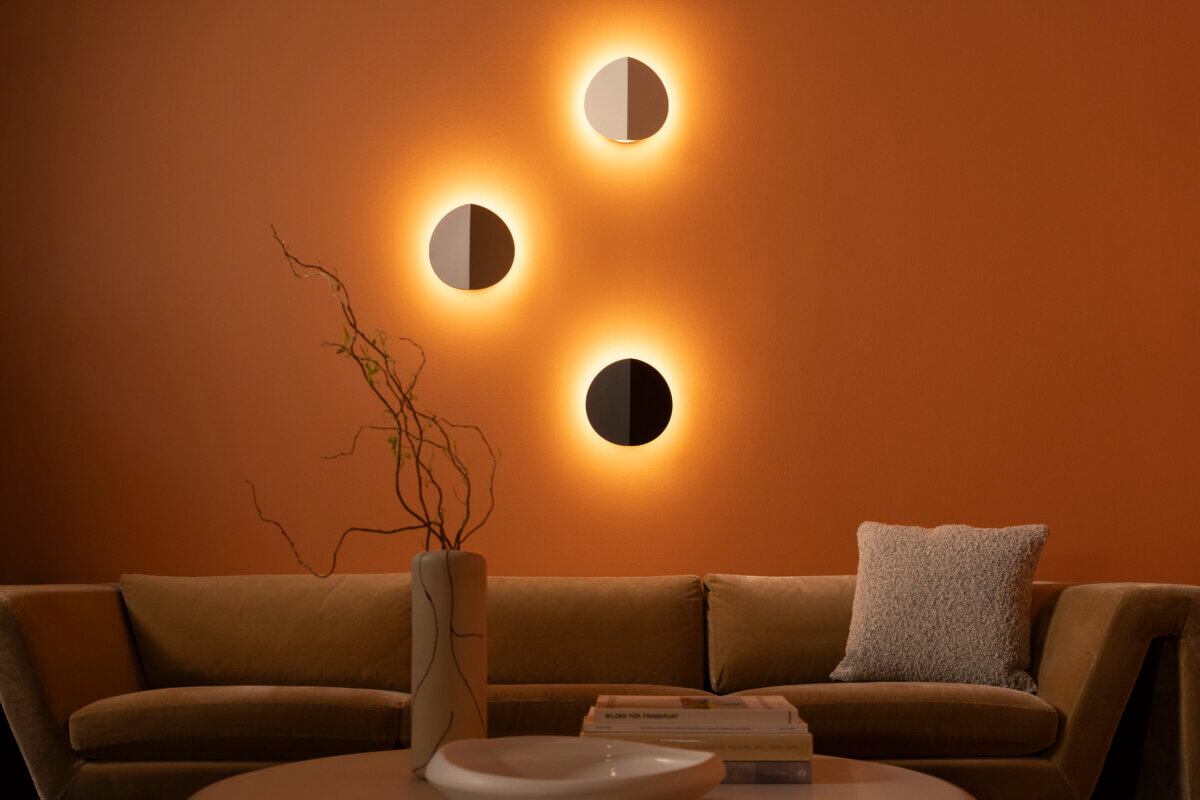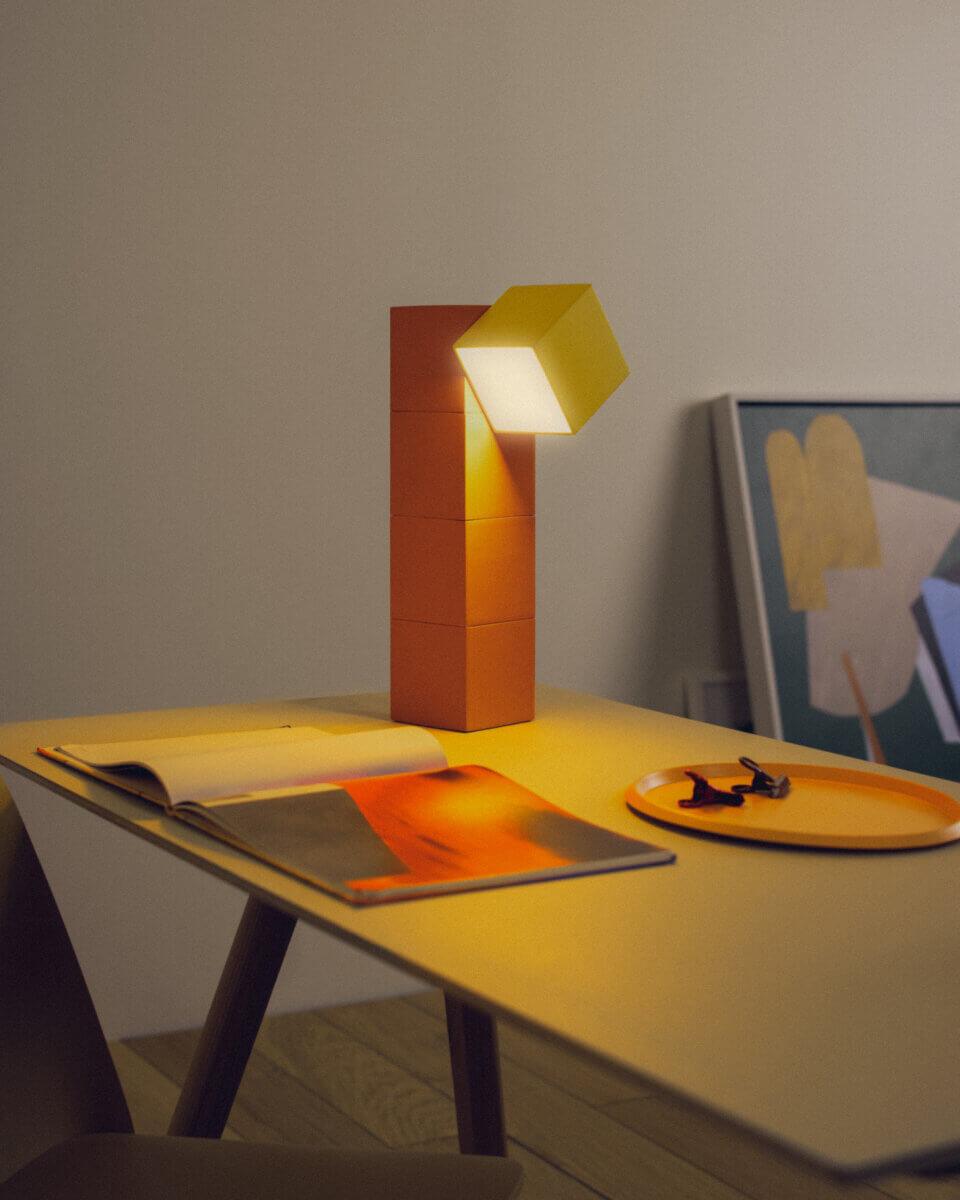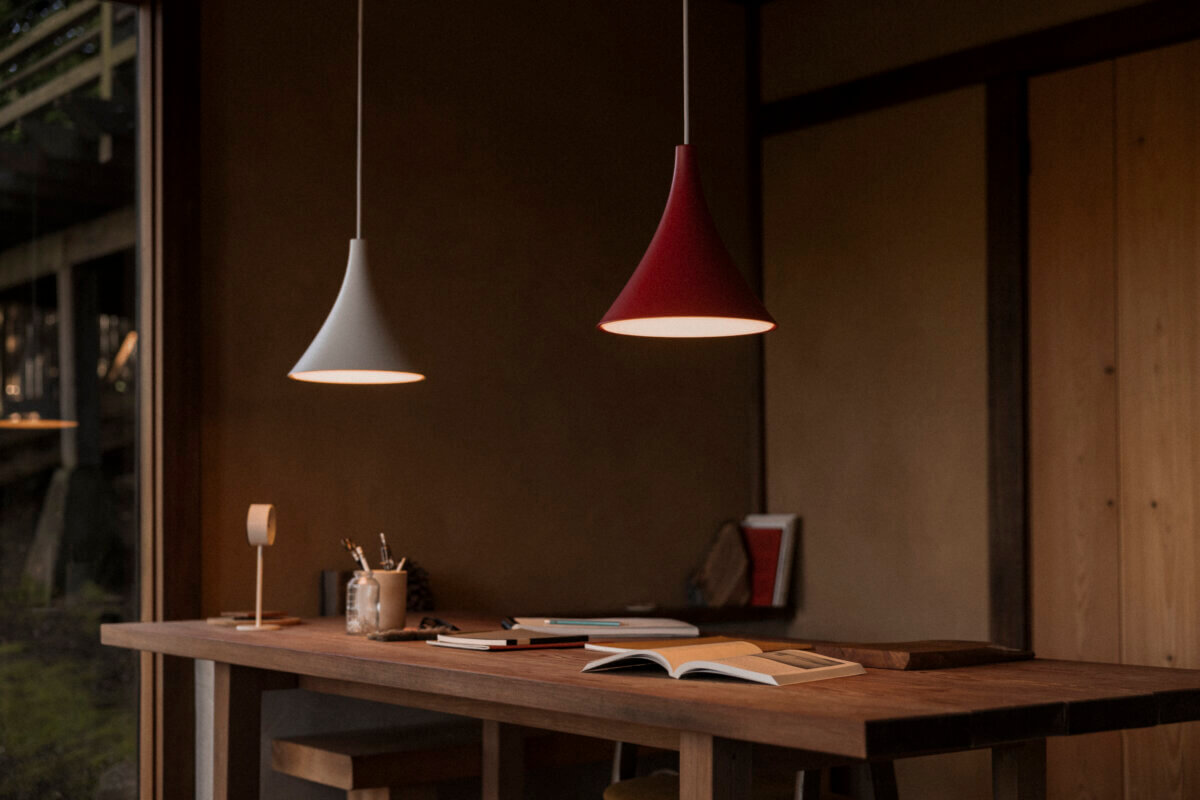
Few studios, brands, or institutions get it right when it comes to solving—let alone addressing—some of the most confounding ‘wicked problems’ facing the design industry today: accessibility, sustainability, and affordability. Gantri has achieved all three. By harnessing the enigmatic potential of 3D printing, the luminaires producer offers a wide range of emerging talents with their first big breaks; a chance to realize formally, aesthetically, and functionally experimental concepts in ways the majority of leading platforms are unable. Established names are able to flex a different muscle.
(Image above: Founder and CEO of Gantri, Ian Yang with Gantri products)
How is Gantri able to do this while remaining financially viable? Because of the nature of the paradigm-shifting technology it has fully adopted, the California-based company manufactures new products without the need for immediate scalability. A design can be produced in mass or a one-off piece. Both production and the use of hyper-sustainable plant-based polymers allows Gantri to keep prices reasonable.
“Gantri is an amalgamation of disciplines: manufacturing, tech, and design, that may seem random at first,” says founder and CEO Ian Yang. “But it’s really the culmination of my life experiences and passions.”
From a family with a business in international logistics, Yang began his career studying political science. “I was trained to think holistically about issues of global trade, industrialization, and manufacturing,” he describes. “At the same time, I’ve always been drawn to design.” After a few years in the fashion sector, Yang pursued an additional degree at London art and design school Central Saint Martins. “I then moved to San Francisco to work in tech because I believed (and still do!) that this domain is the best way to advance human progress,” he adds. “I even learned to code and worked as a software engineer. One day, curiosity led me to a local machine shop where I discovered 3D printing. I instantly fell in love with the technology and the idea for Gantri came to me on the spot.”
Through this disparate but ultimately cohesive set of experiences, Yang observed that the conventional furnishings industry has long been constrained by the complexity and rigidity of mass production. “Launching new products takes years and requires large teams, making it extremely costly and inaccessible,” he explains. “Quality control is a constant challenge, and matching demand with supply is difficult—especially during supply chain disruptions, which only adds more costs and headaches.”
Gantri flips this pervasive narrative by not having to hold inventory. Every order is made on-demand at its California Digital Factory in just two weeks and shipped directly to customers. This approach safeguards the company from economic uncertainties, like the recent set of international tariffs. “Local manufacturing has been central to our vision from day one, allowing us to build domestic capabilities years ahead of others,” says Yang. “This is what enables us to offer rapid product development and manufacturing lead times, while helping furniture brands de-risk from uncertain global trade conditions. We’re seeing this advantage play out in real time as brands look to onshore their supply chain, and it’s accelerating our growth.”
With a diverse range of fixtures on offer, the brand focuses on lighting design as the optimal medium to prove Gantri’s yet to be matched vision; showcasing the quality, diversity, and creativity that digital manufacturing can deliver. Today, the brand manufactures over 5,000 SKUs of lighting on its production line—a volume largely unattainable through traditional mass production. The company isn’t resting on its laurels however. The new Gantri Made is an opening resource—imparting the innovative procedures the company has implemented so far—to the rest of the market.
“The furniture industry is extremely polluting and wasteful,” Yang notes. “12 million tons of products end up in US landfills every year, most of it made from non-recyclable, non-renewable, and toxic materials. Sustainability has been core to Gantri’s mission from day one. Leveraging our innovative digital manufacturing model, we’ve pioneered several sustainability initiatives—many of them firsts.”
Gantri’s family of high-performance, biodegradable Plant Polymers serve as non-toxic alternatives to plastic. The very fact that it is produced on a case by case basis in the U.S. reduces the large carbon footprint that comes from long distance transportation. Additionally, there’s no waste from overproduction; unsold items that are ultimately thrown away.
Gantri recently teamed up with vintage design purveyor Rarify, who shares a similar vision of the industry, especially in terms of sustainability. However, the latter goes about it differently, focusing on repair and restoration rather than biodegradability. Launched during NYCxDesign this May, Cube One is a new modular light—the first concept fully imagined by Rarify— developed using the Gantri Made platform.
“This is just the beginning, ” Yang concludes. “Our vision is to create a fully circular, net-zero furniture ecosystem. We’re working diligently to make it a reality.”
If you are curious to discover more about Gantri, check out their website, HERE
Follow Gantri on Instagram
More from ICFF:
Hola México: A Collective Voice for Mexican Design
Provocations for the Future of Design






